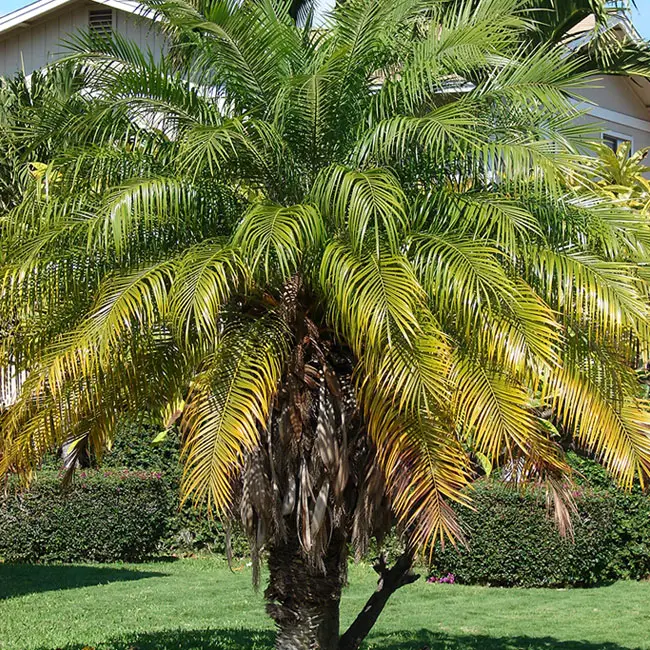
The Pygmy Date Palm Tree, scientifically known as Phoenix roebelenii, is one of the most commonly used palms in American landscaping. It not only thrives in a variety of outdoor settings but also presents a striking appearance when cultivated in containers.
This slow-growing palm typically reaches a maximum height of 10 feet, making it ideal for small gardens and often regarded as a dwarf palm. It exhibits exceptional grace when planted in groups of three to five specimens.
The Pygmy Date Palm is native to Southeast Asia. It originates from regions in southeastern Asia, including areas in southern China, Laos, Vietnam, and Thailand.
Phoenix roebelenii can endure cold temperatures down to 15°F and is suitable for cultivation in states such as Alabama, Arizona, Arkansas, California, Georgia, Louisiana, Mississippi, Nevada, Oregon, and Texas.
Quick Facts:
| Scientific name: | Phoenix roebelenii |
| Common names: | Pygmy Date Palm, Robellini Palm, Miniature Date Palm. |
| Origin: | Native to Southern China. |
| Growth Rate: | Slow. Up to 5 – 10 ft tall and 1-5 ft wide. |
| Cold Tolerance: | USDA Zones 10a (30 – 35 F) to 11 (above 40 F). |
| Light Req: | Partial shade to full sun. |
| Water Req: | Moderate. |
| Soil Req: | Widely adaptable. |
| Fruit: | Yes. Black. Not edible. |
| Propagation: | By seeds, germinating in 2-3 months. |
Pygmy Date Palm Identifying Characteristics
In its natural habitat, the Pygmy Date Palm boasts a single trunk, but in cultivation, it’s commonly planted in groups of 3-5 specimens. When arranged in clusters, the trunks gracefully curve away from the center, creating a particularly attractive display.
The trunk of the Pygmy Date Palm is adorned with old leaf scars and crowned with pinnate, feather-like leaves that extend to about 4 feet in length.
These leaves are bright green, droopy, and equipped with 4-5-inch leaflets that transform into 2-3-inch sharp spines at the base of the petiole. Caution is advised when pruning, and it’s essential to keep children away from the sharp spines.
Pygmy Date Palm Flowers and Fruits
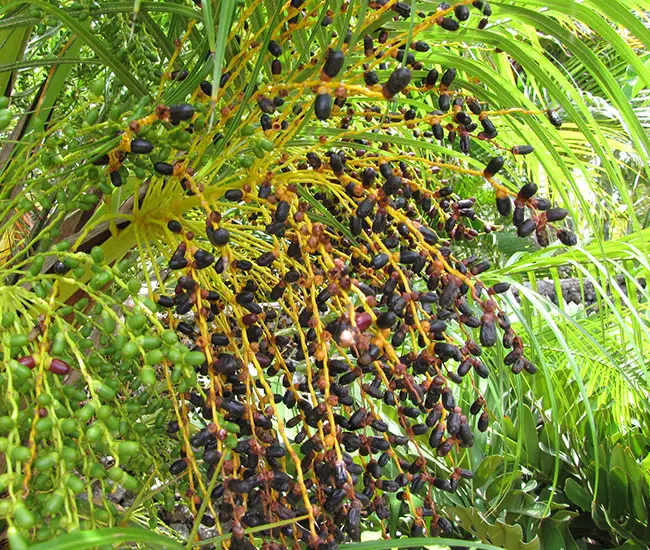
During spring, the Pygmy Date Palm produces beautiful creamy flowers held by 1-foot long stalks. Notably, this palm is dioecious, meaning male and female flowers grow on separate plants. Between September and October, these flowers are succeeded by small dates.
Typically, it features 10-13 long fruit clusters hanging beneath the leaves. The fruits are elliptical, about 1/2 inch in length, and turn from red-brown to dark purple when ripe. The fruit primarily consists of seeds with only a thin layer of edible flesh.
How To Care For Pygmy Date Palm
Phoenix roebelenii is a compact palm that generally grows to a height of 5-10 feet and a width of 1-5 feet, although it typically stays under 7 feet.
It is highly favored as an indoor palm tree due to its adaptability to various container sizes, making it perfect for decks or entryways.
Phoenix roebelenii is a cold-hardy palm, capable of withstanding temperatures as low as 15°F once it matures. It thrives in USDA Zones 10a (30 – 35°F) to 11 (above 40°F).
This palm thrives in full sun but can also tolerate partial shade. It adapts well to various soil types but prefers moist, well-drained soil and is not particularly drought-tolerant.
The Pygmy Date Palm does not naturally shed its old leaves and requires regular removal to maintain its attractive appearance. To prevent nutritional deficiencies, it’s recommended to use high-quality palm fertilizer with a continuous-release formula, applied twice a year during the growing season.
Propagation is typically done by seed, which takes approximately 3-4 months to germinate. Ideal conditions for germination include warm, moist soil with adequate shade to protect young seedlings from direct sunlight.
Pygmy Date Palm Pictures
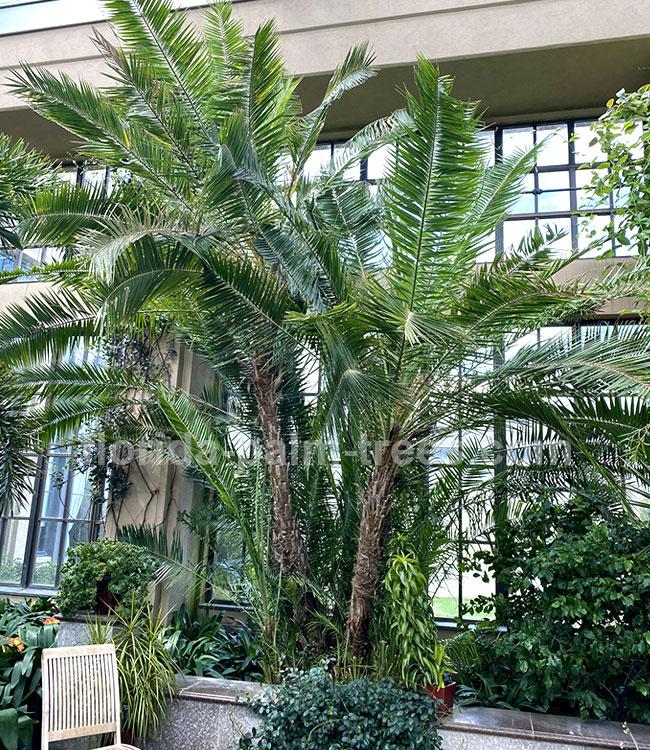
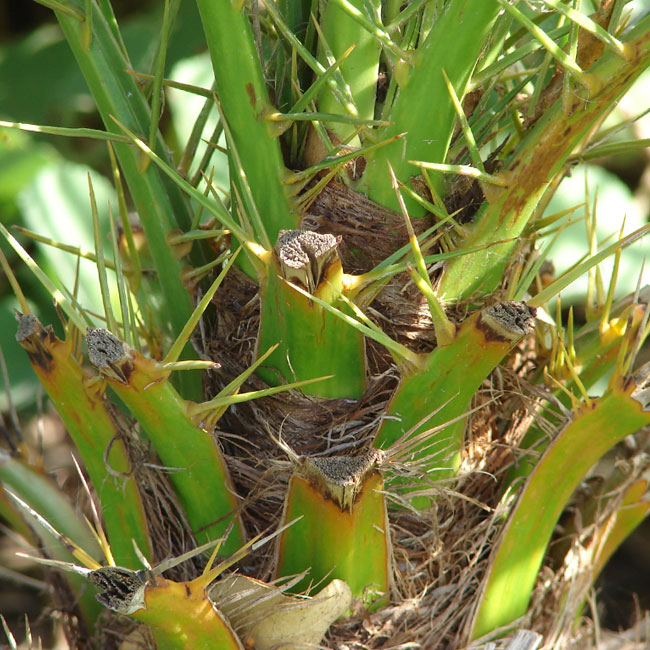
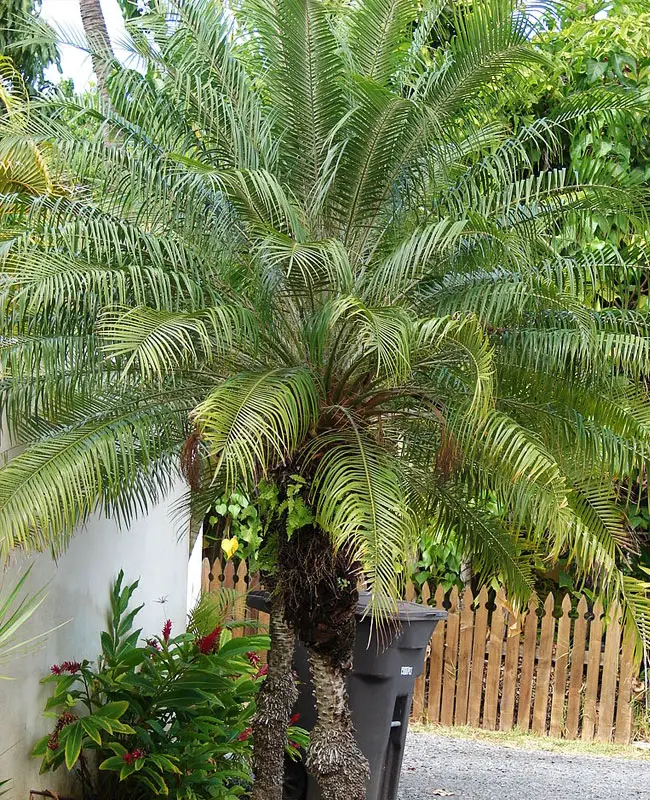
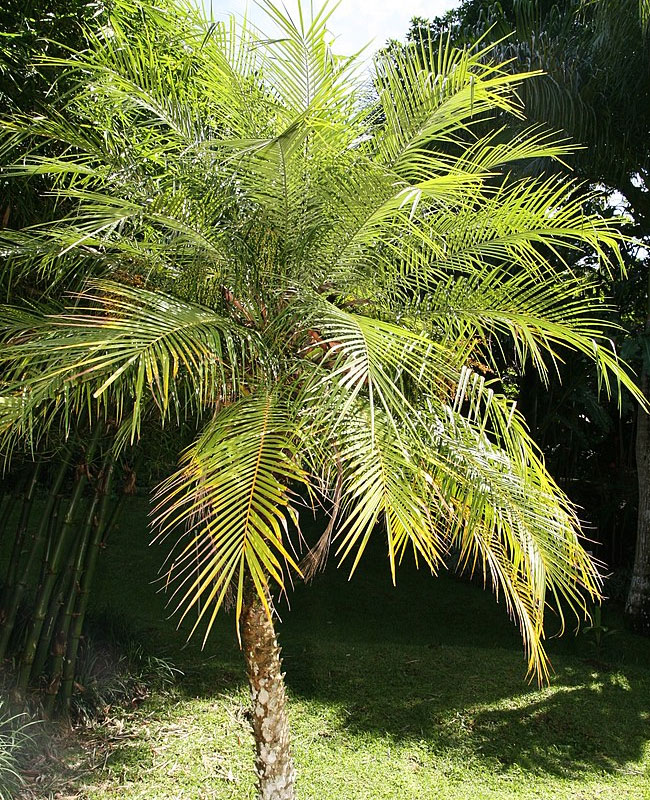
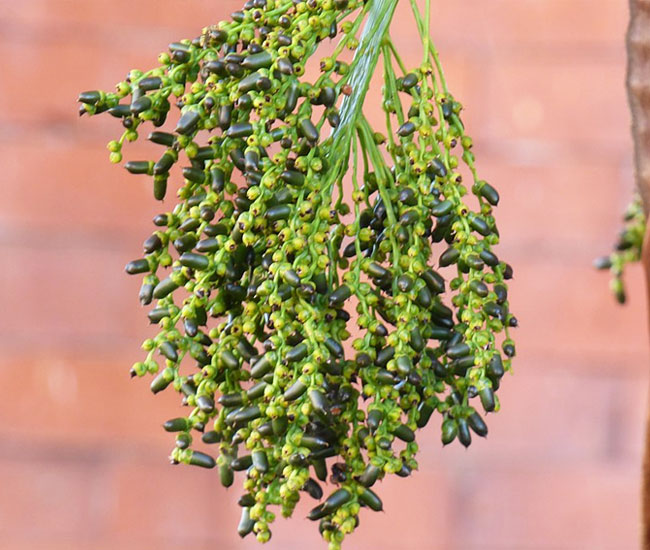
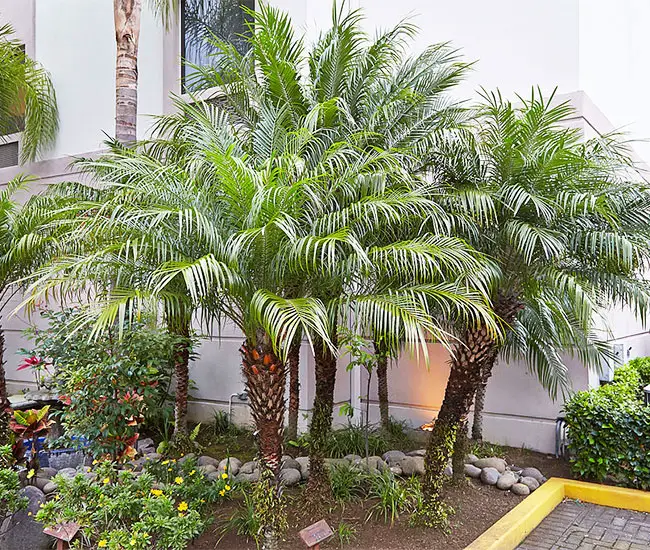
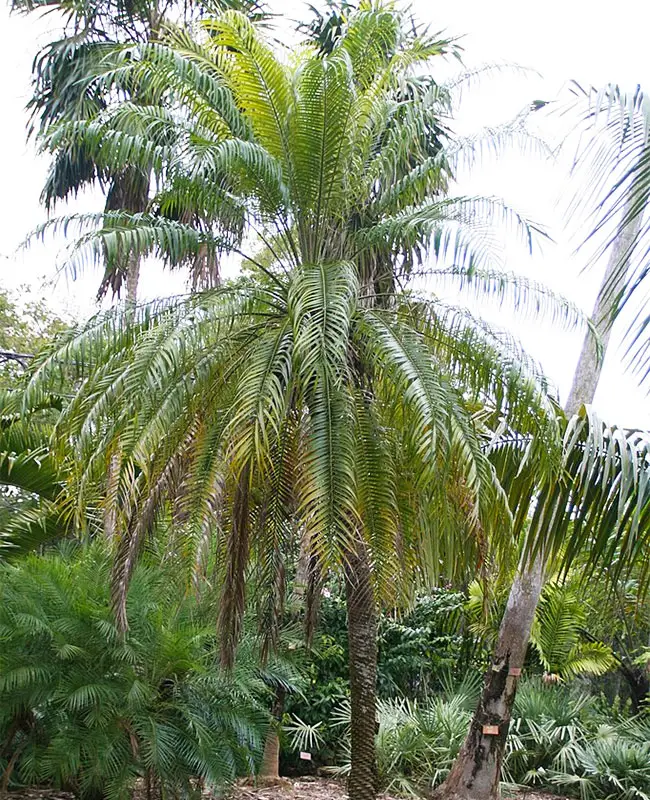
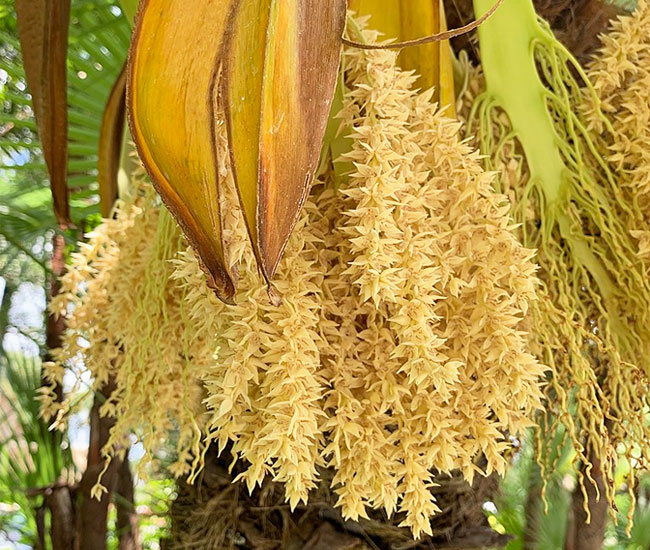
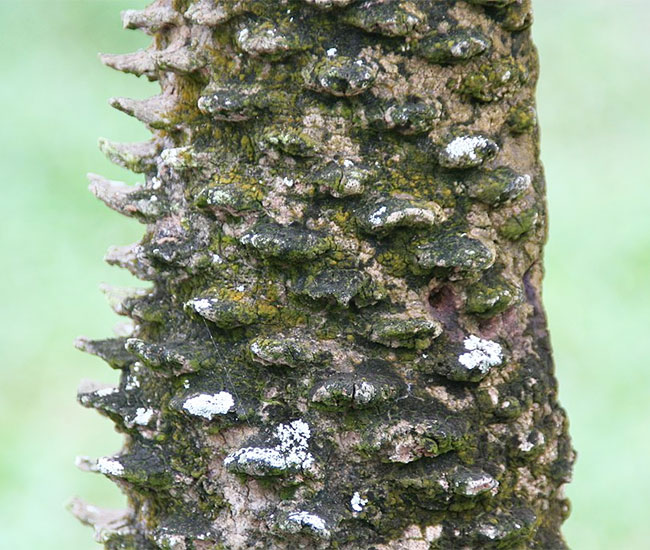
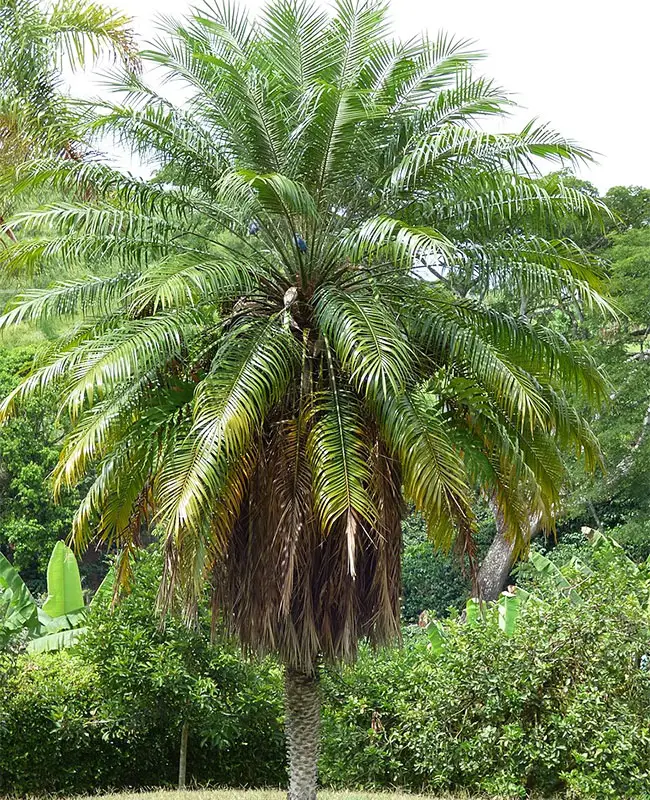
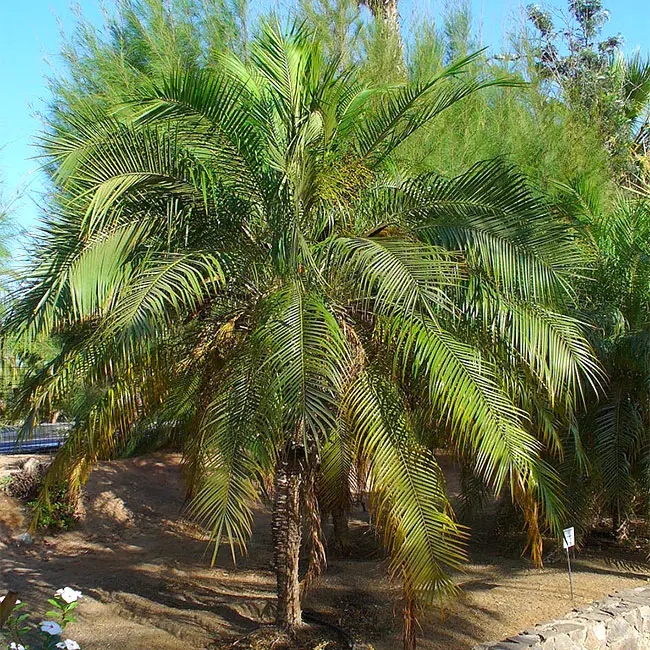
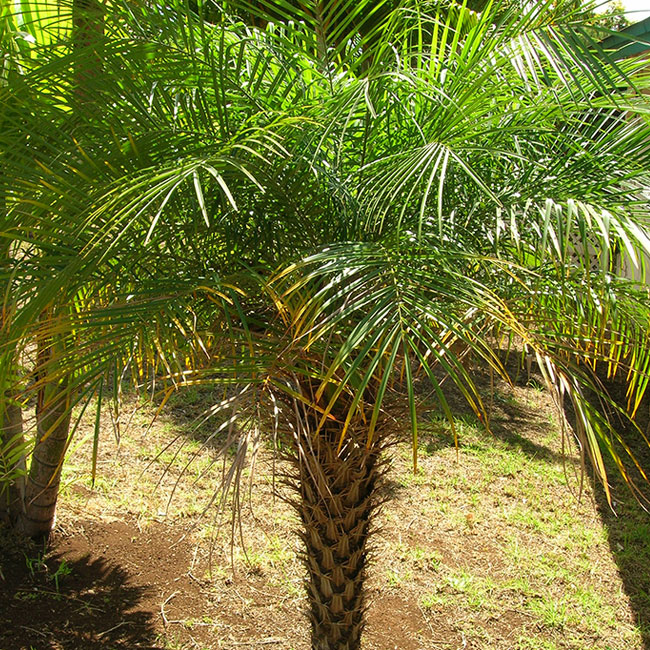
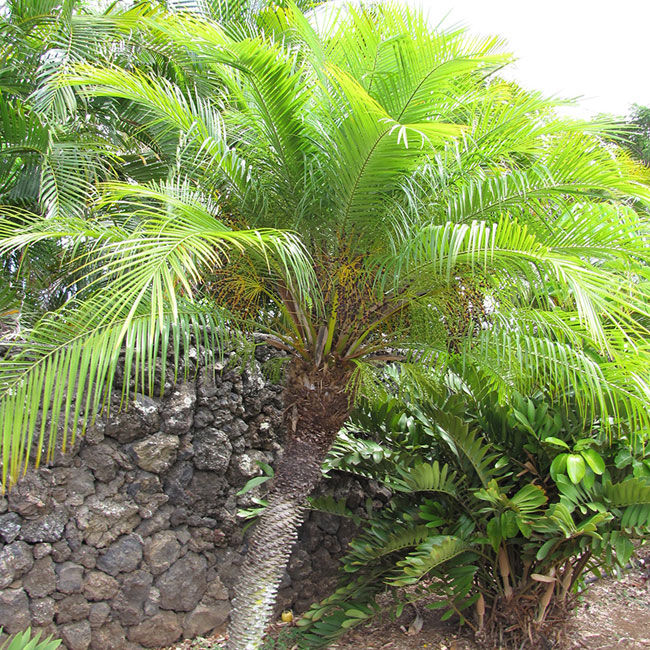
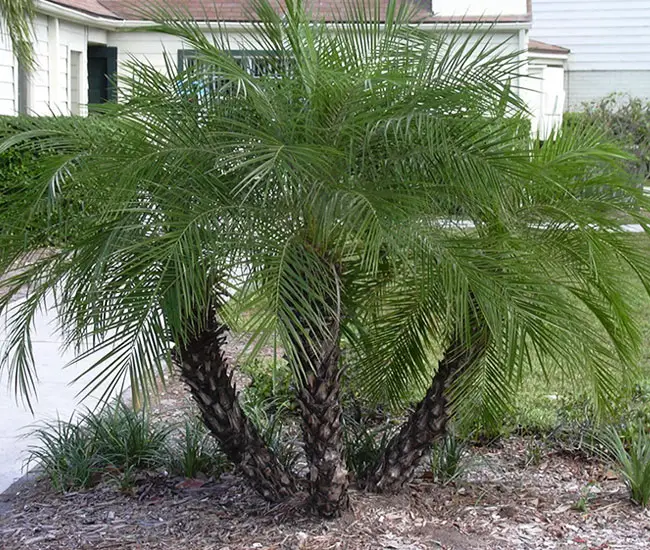
More information can be found on EDIS and Floridata sites.

Very helpful. Thank You
I live in California on the central coast and already have Roebelinii palms in my yard, some are in partial shade and some in another area under a giant Morton Bay Fig so that they get a little sunrise and sunset sun at times. I have a new spot that I would like to place them, It is an area enclosed by building on three sides and very sheltered. They would not have direct sun, only some bouncing off the side of the building for part of the day. Could they live there ? thank you
Help in Savannah Ga.. My palm may have been damaged. We had 6 nights with lows in the 20s.. Low to mid was and snow. I covered the pigmy but it looks burned. Any suggestions?
My question is, I have healthy pygmy Date palms, . Am I hurting them by pruning the pods before they open..When and how much should I prune.. I like to keep them neat and not quite too full on top. Am I over trimming or hurting them?
My question is, I have healthy pygmy Date palms, . Am I hurting them by pruning the pods before they open..When and how much should I prune.. I like to keep them neat and not quite too full on top.
I am interested in purchasing. a single trunk Pygmy date palm. Do you sell those?
I’M TRYING TO IDENTIFY MY PALM TREE. IT HAS A LARGE BULB IN THE CENTER